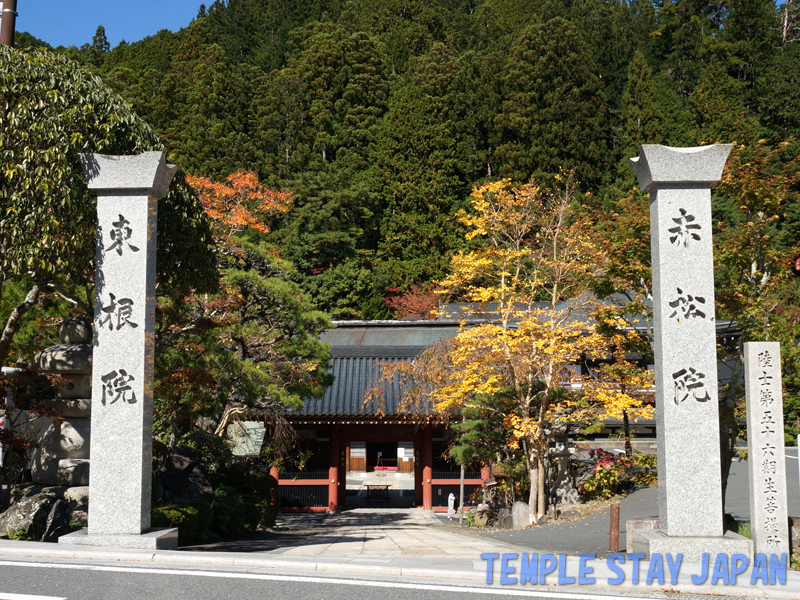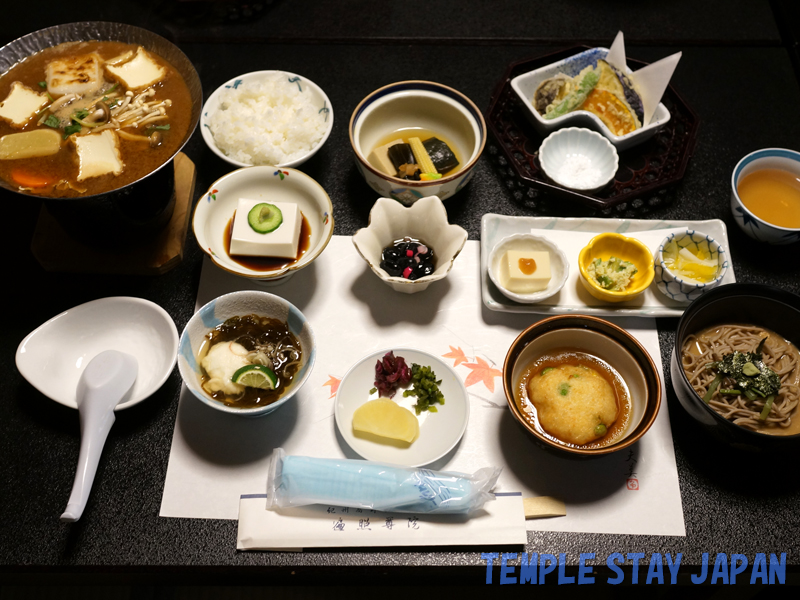Wakayama– category –
-

Jyochiin temple stay (Wakayama)
It was the precinct of Jyochi-in that became the temporary residence for Priest Kobo when he climbed Mount Koya for the first time. The building was nearly new in general, the main hall hasn`t changed. While many Buddha statues were watching, I participated in the morning service in a solemn atmosphere. -

Saimonin temple stay (Wakayama)
They serve shojin vegetarian cuisine. If you request it, sake will be served. You are able to participate in the morning service. They welcome people traveling alone. -

Sekisyoin temple stay (Wakayama)
The curfew is 22:00. There are many things to see, including a beautiful garden larger than 6,600 square meters and a carved wooden tiger made by Jingoro Hidari. Also being close to Oku-no-in, it is convenient to go worshipping. They serve Koya-tofu as well. -

Henjosonin temple stay (Wakayama)
The baths are really the best, including a Japanese cypress bath that is said to be the largest on Mount Koya and an herb bath. They naturally serve shojin vegetarian cuisine. I participated in the morning service and listened to the sermon of the head priest, followed by osunafumi (stepping on sand). -

Zimyoin temple stay (Wakayama)
It is a wooden temple with a calm atmosphere surrounded by a vast garden. The front garden of eight-leaf laurel was created by Osamu Mori, a famous gardener in the Modern Age. They served shojin vegetarian cuisine, which tasted very good. You can participate in the service, which starts at 7:00 in the morning. -

Ichizyoin temple stay (Wakayama)
Located in the center of Mount Koya, it is very convenient to walk around the city from this temple. What is surprising upon entering the shukubo is the beauty of the interior ornaments and the room itself. The meals are shojin vegetarian cuisine and you can have them in your room. -

Tentokuin temple stay (Wakayama)
The temple was named after the fact that the bones of Tentokuin, the wife of Toshiie Maeda, a famous feudal warrior, were enshrined here. It has a Japanese garden designed by Enshu Kobori. You are able to appreciate this beautiful garden from the guest rooms made of Japanese cypress built in Shoin style. -

Rengezyoin temple stay (Wakayama)
This is the shukubo where Yukimura Sanada lived with his family. Sanada was a warrior who played an important role in the Battle in Sekigahara and Summer and Winter Battles in Osaka, which became turning points in Japanese history. During the meal, student priests from Koyasan High School and University wait on you. -

Daienin temple stay (Wakayama)
They serve shojin vegetarian cuisine. They have a morning service. This shukubo has the sad love-story of Takiguchi Nyudo and Yokobue. The “Uguisu-no-Ido” (Nightingale’s well) and “Uguisu-no-Ume” (Nightingale’s plum) related to this sad story still remain in the garden. -

Ekoin temple stay (Wakayama)
The Shojin cuisine served in the room was really delicious. Compared with the shukubo that I stayed at on the previous day, this place was larger in scale. In terms of accommodation facilities, it was more sophisticated. Only people who wished to participated in the morning service at the main hall from 6:30.










